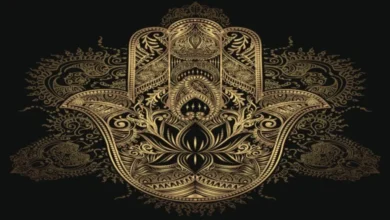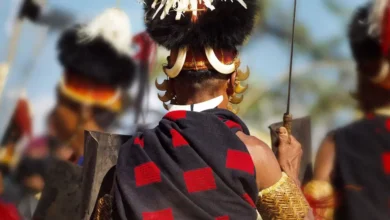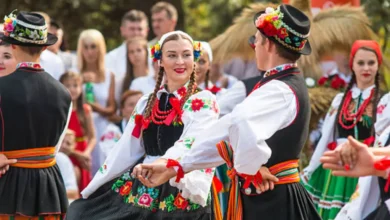Before dye touched thread, color was prayer.
Red wasn’t “bold” — it was blood, fire, birth.
Blue wasn’t “calm” — it was sky’s whisper, spirit’s depth.
Every hue carried a heartbeat. A warning. A blessing.
This is not fashion. This is language — stitched in light.
Your Clothes Speak in Color — Do You Know What They’re Saying?
That red sash?
That indigo wrap?
That saffron veil?
It’s not “just a look.”
It’s a message.
See also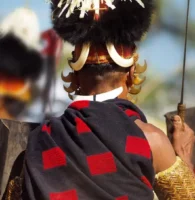 Ritual Symbols in Folk Costumes: Social Significance and Ceremony Designs
Ritual Symbols in Folk Costumes: Social Significance and Ceremony DesignsA coded signal from ancestors.
A spiritual contract with the earth.
A declaration of status, grief, joy, or power.
For thousands of years — across every continent — people chose colors for their clothing not by trend…
…but by truth.
In this article, you’ll discover:
See also How to Create a Traditional Day of the Dead Ofrenda
How to Create a Traditional Day of the Dead Ofrenda- 🎨 What color symbolism in ethnic clothing really means — beyond aesthetics
- 🌍 Real examples from Navajo, Maasai, Indian, Japanese, Berber, Ukrainian, Andean, Yoruba, and global traditions
- 🔥 How red = life in one culture, mourning in another — and why context is everything
- ⚠️ The quiet erasure of sacred dyes — and powerful modern revival
- ✂️ How to wear or use symbolic colors ethically
- 🧵 A simple DIY guide to choose your own meaningful color palette — rooted in personal truth, not appropriation
- 💬 Strong, respectful Call to Action — because color should never be stolen
Let’s begin — one hue, one story at a time.
What Is Color Symbolism in Ethnic Clothing? (Plain & Simple)
Color symbolism in ethnic clothing = the intentional use of specific colors in traditional garments to communicate spiritual, social, seasonal, or ancestral meaning — often tied to natural dyes, regional plants, and cultural memory.
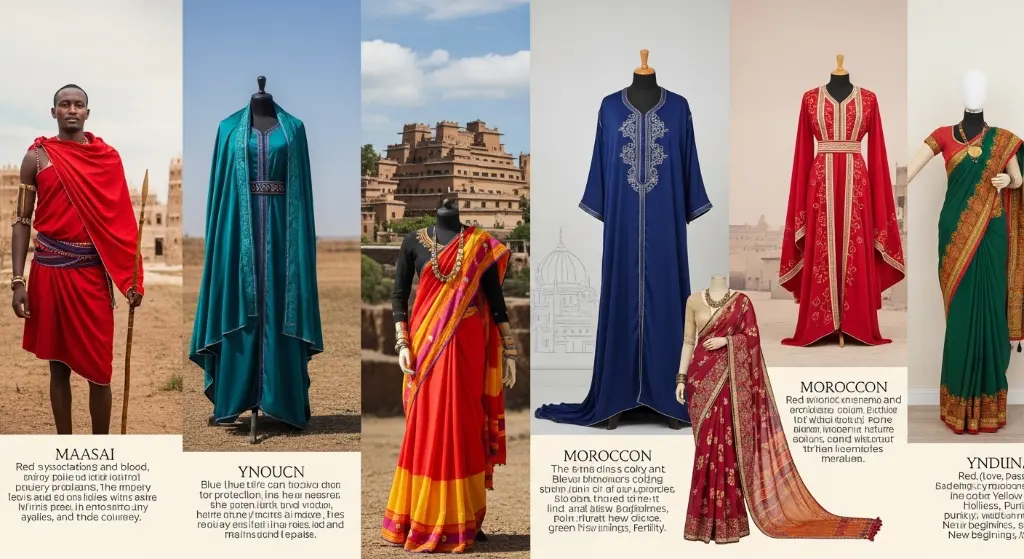
Think:
- Navajo women wearing black + red → protection + life force
- Maasai warriors in bright red → bravery + unity
- Indian brides in red → fertility + divine feminine power
- Japanese mourners in white → purity + passage to afterlife
- Berber women in indigo → sky memory + female strength
- Ukrainian embroiderers using black → ancestral wisdom + grounding
- Andean weavers choosing cochineal red → sacred offering to Pachamama
- Yoruba priestesses in yellow → Oshun’s sweetness + abundance
These aren’t random choices.
They’re inherited codes. Earth-born alphabets. Silent sermons in thread.
“We didn’t pick colors from a wheel. We picked them from our wounds, our soil, our sky.”
— Diné (Navajo) weaver
Why Did Cultures Assign Meaning to Color?
Because color is energy.
Before psychology. Before Pantone. Before Instagram filters.
People knew:
- Red makes the heart beat faster
- Blue quiets the mind
- Yellow lifts the spirit
- Black holds space for grief
But more than that — color was:
1. Tied to the Land
Dyes came from roots, bark, insects, clay.
If your region grew madder root → you wore red.
If your mountains held indigo shrubs → you wore blue.
If your valleys bloomed saffron crocus → you wore gold.
Your color = your geography.
2. Sacred Language
Gods had favorite hues. Spirits responded to certain shades.
Wear green? Invite forest blessings.
Wear white? Welcome ancestral guides.
Wear black? Absorb negativity before it touches skin.
Thread became incense. Dye became offering.
3. Social Signal
Unmarried? Wear bright yellow.
Mourning? Switch to unbleached linen.
Warrior? Drape yourself in blood-red.
Healer? Cloak in plant-dyed green.
No words needed. The cloth announced it all.
4. Seasonal Calendar
Spring = fresh greens + sky blues
Summer = blazing reds + sun yellows
Autumn = burnt oranges + deep browns
Winter = stark whites + shadow blacks
Clothing shifted with the land — not the runway.
Quick Guide: Global Color Meanings in Traditional Wear
| Color | Culture(s) | Meaning | Common Garments |
|---|---|---|---|
| 🔴 Red | Navajo, Chinese, Indian, Maasai | Life force, courage, fertility, protection | Wedding saris, warrior shukas, ritual blankets |
| 🔵 Blue | Japanese, Berber, Ainu, Yoruba | Sky, water, calm, divine communication | Indigo robes, headwraps, spirit cloaks |
| ⚪ White | Japanese, Hindu, Slavic, Tibetan | Purity, death, new beginnings, spirit realm | Funeral kimonos, widow’s veils, monk robes |
| 🟡 Yellow | Yoruba, Buddhist, Andean, Celtic | Sun, wisdom, abundance, divine light | Priestess gowns, monk robes, harvest wraps |
| 🟢 Green | Islamic, Celtic, West African, Balinese | Nature, renewal, healing, paradise | Festival caftans, healer’s cloaks, rice-field wraps |
| ⚫ Black | Ukrainian, Balkan, Navajo, Scottish | Ancestral memory, protection, grounding, mourning | Embroidered blouses, funeral plaids, ceremonial aprons |
| 🟣 Purple | Thai, Byzantine, Polynesian | Royalty, mystery, spiritual awakening | Temple dancer wraps, royal silks, chiefly robes |
| 🟤 Brown | Hmong, Quechua, Sami, Tibetan | Earth, humility, endurance, simplicity | Hemp tunics, reindeer-hide coats, mountain ponchos |
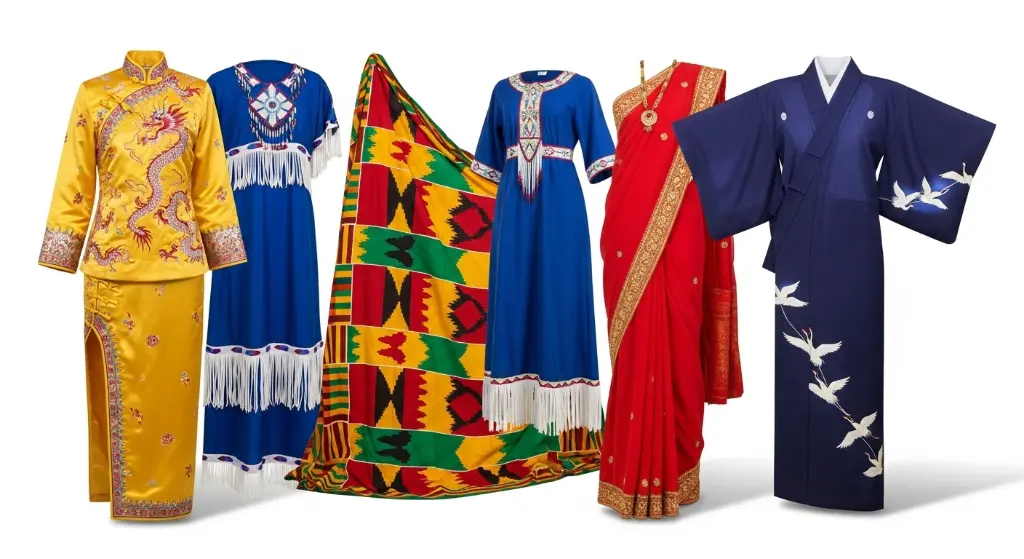
Now — let’s meet each color up close.
🔴 Red: The Color That Screams “I Am Alive”
Red doesn’t whisper.
It pulses.
India — Bridal Red Sari
Not “romantic.” Not “sexy.”
Sacred.
Red = Shakti (divine feminine power).
Red = sindoor (vermillion powder marking married status).
Red = protection from evil eye during vulnerable transition.
Brides wear it to say: I am fertile. I am fierce. I am blessed.
“Red isn’t worn to please the groom. It’s worn to honor the goddess within.”
— Tamil wedding elder
Navajo — Red + Black in Wool Dresses
Red = life force (Spider Woman’s gift).
Black = protection, night, ancestral memory.
Worn together → balance. Power. Grounded energy.
Often used in ceremonial dresses for puberty rites, healing, prayer.
“Red without black is fire without hearth. Wild. Uncontained.”
— Diné teaching
Maasai — Shúkà (Red Blanket)
Warriors drape themselves in bright red cotton.
Why? To stand out to lions — and to enemies.
Also symbolizes:
🔴 Blood = unity
🔴 Soil = homeland
🔴 Sunset = daily victory over chaos
“When you see red moving on the plain, you know: Maasai walk here.”
— Naserian, beadworker
🔵 Blue: The Sky’s Whisper, the Water’s Prayer
Blue doesn’t shout.
It holds.
Japan — Indigo (Aizome) Kimonos
Farmers, firefighters, laborers wore deep blue.
Why? Indigo dye repels insects, resists dirt, strengthens fabric.
Spiritually? Blue = stillness. Depth. Impermanence.
Worn during tea ceremonies, funerals, meditation.
“Indigo doesn’t fade. It softens. Like wisdom.”
— Okinawan dyer
Berber (Amazigh) — Indigo Headscarves + Capes
Women of Morocco + Algeria wear rich blue wool.
Symbolizes:
🔵 Sky memory → ancestors watching
🔵 Water → life in desert
🔵 Female resilience → dye process takes days, done only by women
Fades with washing → shows age, experience, endurance.
“The deeper the blue, the stronger the woman who wore it.”
— Fatima-Zahra, textile artist
Yoruba — Blue Gele for Oshun Devotees
Oshun — river goddess of love, sweetness, art — adores blue + gold.
Her priestesses tie elaborate headwraps (gele) in indigo-dyed cloth.
Worn during rituals to invoke: flow, intuition, creative abundance.
“Dress like the river — blue at dawn, gold at noon.”
— Lagos market proverb
⚪ White: Not Empty — Sacred Space
White isn’t “nothing.”
It’s everything held gently.
Japan — White Kimono for Funerals + Weddings
Same color. Opposite meanings.
⚪ Funerals → purity, passage to spirit world
⚪ Weddings → new beginning, blank scroll of life
Fabric: unbleached silk or hemp — honoring natural state.
“White doesn’t hide stains. It invites reverence.”
— Kyoto temple tailor
Hindu — Widow’s White Sari
In many regions, widows wear plain white — no jewelry, no color.
Meaning: release of worldly ties, devotion to spirit, quiet strength.
Controversial today — many widows now reclaim color as act of resistance.
“White was given to silence us. Now we wear it — and speak anyway.”
— Women’s collective, Varanasi
Tibet — White Scarves (Khatas)
Offered during greetings, prayers, farewells.
Symbolizes: purity, compassion, goodwill.
Never worn as clothing — only gifted, draped, offered.
“White isn’t worn. It’s given. Like breath.”
— Tibetan nun
🟡 Yellow: The Sun’s Laughter, the Earth’s Gold
Yellow isn’t “cheerful.”
It’s alchemy.
Yoruba — Yellow for Oshun’s Daughters
Oshun = honey, rivers, laughter, abundance.
Her colors: yellow + gold.
Devotees wear yellow headwraps, skirts, beads during festivals.
Not decoration — invocation.
“If you want sweetness, dress like honey.”
— Candomblé priestess, Brazil
Buddhist Monks — Saffron Robes
Not “orange.” Not “brown.”
Saffron-yellow — dyed from jackfruit, turmeric, heartwood.
Represents: detachment, humility, middle path.
Worn to say: I own nothing. I serve everything.
“The robe isn’t yellow to stand out. It’s yellow to remind: all things fade.”
— Theravada monk
Andes — Cochineal Red-Yellow for Pachamama
Cochineal insects crushed into dye → crimson that shifts gold in sun.
Used in offerings to Pachamama (Earth Mother).
Worn during planting + harvest — to bless soil + seed.
“The insect gives its life. The sun gives its glow. We give our gratitude.”
— Quechua weaver
🟢 Green: The World Breathing
Green isn’t “eco-chic.”
It’s alive.
Islamic World — Green Caftans + Turbans
Green = Prophet Muhammad’s favorite color.
Green = Paradise. Renewal. Mercy.
Worn during Eid, pilgrimages, Friday prayers.
Forbidden for some rulers historically — reserved for descendants of the Prophet.
“Green isn’t worn to impress. It’s worn to remember: mercy grows everywhere.”
— Sufi teacher
Celtic Lands — Moss-Green Cloaks
Worn by druids, healers, forest-dwellers.
Dyed from lichen, nettles, oak gall.
Symbolizes:
🟢 Connection to wild places
🟢 Healing herbs
🟢 Hidden knowledge
“The green cloak doesn’t hide you. It roots you.”
— Irish herbalist
Bali — Green Udeng (Headwrap) for Farmers
Men working rice terraces wear green-dyed head cloths.
Blessed before planting — to invite growth, rain, pest protection.
“Green on your head keeps green in your fields.”
— Balinese farmer
⚫ Black: Not Mourning — Holding Space
Black isn’t “sad.”
It’s sacred container.
Ukraine — Black Embroidery on Vyshyvankas
Not for funerals.
For wisdom.
Black thread = ancestral memory. Earth’s depth. Protection.
Often paired with red → life held by death, energy grounded by wisdom.
Stitched near collar → guarding voice + truth.
“Black doesn’t swallow light. It remembers where light has been.”
— Carpathian elder
Scotland — Black Stripes on Mourning Plaids
After loss, Highlanders wore arisaid (woman’s plaid) with wide black bands.
Not to hide grief — to hold it visibly.
Washed after one year → releasing sorrow to river.
“Grief shouldn’t be buried. It should be woven — then released.”
— Gaelic saying
Navajo — Black in Storm Patterns
In ceremonial blankets, black zigzags = thunderclouds.
Not ominous — necessary.
Storms cleanse. Reset. Renew.
“Don’t fear the black cloud. Thank it for the rain it carries.”
— Diné weaver
Colonialism Tried to Erase These Colors. Dyers Revived Them.
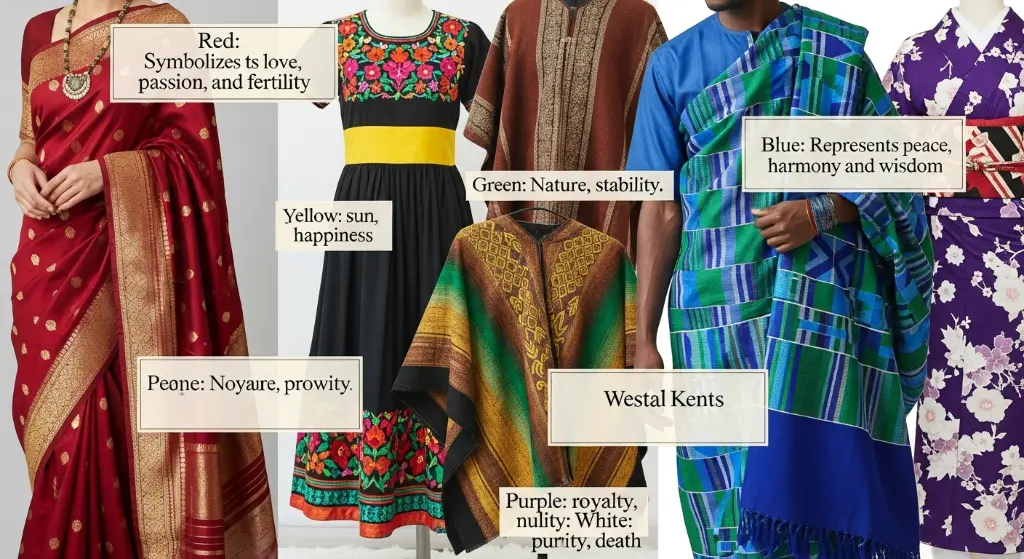
Industrial dyes said: Faster. Cheaper. Uniform.
Missionaries said: Wear white. Reject ‘pagan’ reds.
Schools said: Dress like us. Forget your soil’s hue.
But the dyers?
They saved seeds.
Hid recipes.
Whispered names of plants to daughters.
Today?
- Navajo artists revive cochineal + indigo dye pits
- Maasai women trademark red shuka patterns
- Berber cooperatives export indigo capes globally — on their terms
- Ukrainian designers print black-embroidery motifs on protest gear
- Yoruba priestesses lead Oshun-yellow workshops for diaspora youth
“You can ban our dyes. But you can’t ban our sky.”
— Winona LaDuke, Anishinaabe activist
How to Wear Symbolic Colors — The Right Way
Yes, you can admire them.
But please — never claim them as décor without context.
✅ DO:
- Learn what the color means in its culture — celebration? mourning? protection?
- Buy directly from ethnic artisans — not Amazon, Shein, or Etsy resellers
- Ask if a color is restricted (e.g., royal purple, priestly saffron)
- Credit the culture, region, artist — always
- Wear with reverence — not as costume, trend, or “aesthetic inspo”
❌ DON’T:
- Buy mass-produced “ethnic print” shirts with no cultural ties
- Wear sacred ceremonial colors (e.g., Buddhist saffron, Yoruba Oshun yellow) as festival wear
- Say “I love this tribal vibe” without knowing the labor + land behind the dye
- Ignore requests from communities asking you not to commercialize their sacred hues
“Appreciation learns the recipe. Appropriation steals the pot.”
— Dr. Adrienne Keene, Cherokee Nation, @nativeappropriations
DIY: Choose Your Own Meaningful Color Palette (Ethically!)
Want to honor your own truth through color — without copying someone else’s sacred code?
Here’s how — respectfully, personally, powerfully.
Step 1: Walk Outside. What Color Calls to You?
Not what’s trendy.
What feels like medicine?
Examples:
- Moss green after rain → renewal
- Rust red on old barn → endurance
- Dawn pink on clouds → gentle hope
- Deep brown of wet soil → grounding
Pick 1–3. Sit with them.
Step 2: Ask — What Does This Color Teach Me?
Is it patient? Fierce? Quiet? Generous?
Write down 3 words.
Example:
Rust red → weathered, enduring, quietly strong
Step 3: Name Your Palette. Bless It. Wear It.
Call it “Soil & Sky Palette” or “Dawn Endurance Trio.”
Use it in your home. Your journal. Your clothes.
Say aloud: “This is mine. Made with observation. Blessed by place.”
“Your ancestors didn’t cross oceans so you could wear someone else’s dye. They crossed so you could find your own hue.”
— Toko-pa Turner
Table: Where to Buy Ethically Made Color-Symbolic Folk Wear
| Culture | Ethical Source | What They Sell |
|---|---|---|
| Navajo (Diné) | Toadlena Trading Post | Red + black ceremonial wool wear |
| Maasai | Masaai Women Artisans | Authentic red shúkà + beadwork |
| Berber | Anou Cooperative | Indigo headscarves + capes |
| Japanese | Okamoto Textiles | Natural indigo + white kimonos |
| Yoruba | Oshun’s Daughters Collective | Yellow + gold ritual gele + wraps |
| Ukrainian | Vyshyvanka Day Project | Black + red embroidered blouses |
| Andean | Awamaki | Cochineal-dyed red-yellow ponchos |
| Hindu/Buddhist | Sari Sutra / Dharmapunx | Saffron/yellow spiritual wear |
⚠️ Avoid mass retailers. Support living dyers + artisans directly.
Why This Matters More Than Ever
We live in a world of synthetic dyes. Algorithmic trends. Disposable fashion.
Color symbolism in ethnic clothing offers something radical:
Depth. Memory. Reciprocity.
When you wear indigo — you honor the hands that crushed the leaves.
When you choose red — you acknowledge the blood that flows beneath skin.
When you wrap in white — you make space for what needs to pass.
These colors are anchors.
They whisper:
Slow down.
Watch the land.
Give back.
You are part of the spectrum — not above it.
“In a faded world, true color still sings — if you listen with your skin.”
— Romanian village dyer
Your Turn: Know Your Hues. Honor Others’. Wear With Care.
You don’t need a loom to carry this wisdom.
Start small. Start true.
🎨 1. Pick One Color. Learn Its Roots.
Read a book. Watch a doc. Follow a natural dyer.
📚 Try:
- The Secret Lives of Color by Kassia St. Clair
- Harvesting Color by Rebecca Burgess
- Braiding Sweetgrass by Robin Wall Kimmerer (for land-based color)
- Natural Dyes in Tribal Arts by Dominique Cardon
🧵 2. Support Real Dyers + Artisans
Buy direct. Pay fairly. Share their work.
Search: “[Culture] + natural dye artist + Instagram”
Follow: #SacredHues #WearTheLand #EthnicColor
✏️ 3. Create Your Own Palette
Use the DIY guide above.
Name it. Bless it. Wear it proudly — as YOUR chromatic truth.
🗣️ 4. Speak Up
See sacred colors sold as “ethnic chic”? Gently correct.
See dyers ignored? Amplify them.
See monoculture destroying biodiversity? Donate. Volunteer. Plant native dye plants.
🌱 5. Give Back
Donate to Indigenous land-back + seed-saving initiatives.
Plant a dye garden (marigold, indigo, madder, weld).
Compost. Save heirloom dye recipes.
Teach a child one color symbol — and its true origin.
“Honor the hands that stirred the first dye pots. Then stir your own.”
— Vandana Shiva
Final Thought: You Are a Living Hue
Next time you see red on a cuff, blue on a hem, black on a shawl — pause.
That’s not “just fabric.”
That’s a grandmother crushing cochineal with stone.
A child learning which leaf makes yellow.
A rebel reviving forbidden indigo after war.
Color symbolism in ethnic clothing is alive.
Wear yours with love. Honor others’ with care. Pass them on — correctly.
And remember:
You, too, are a color.
Vibrant.
Shifting.
Sacred.
Wear that truth boldly.
💌 Loved this? Share it with someone who loves color — gently, wisely, beautifully.
🧵 Follow #SacredHues or #WearTheLand on Instagram.
✏️ Grab thread. Walk outside. Begin your color story.

